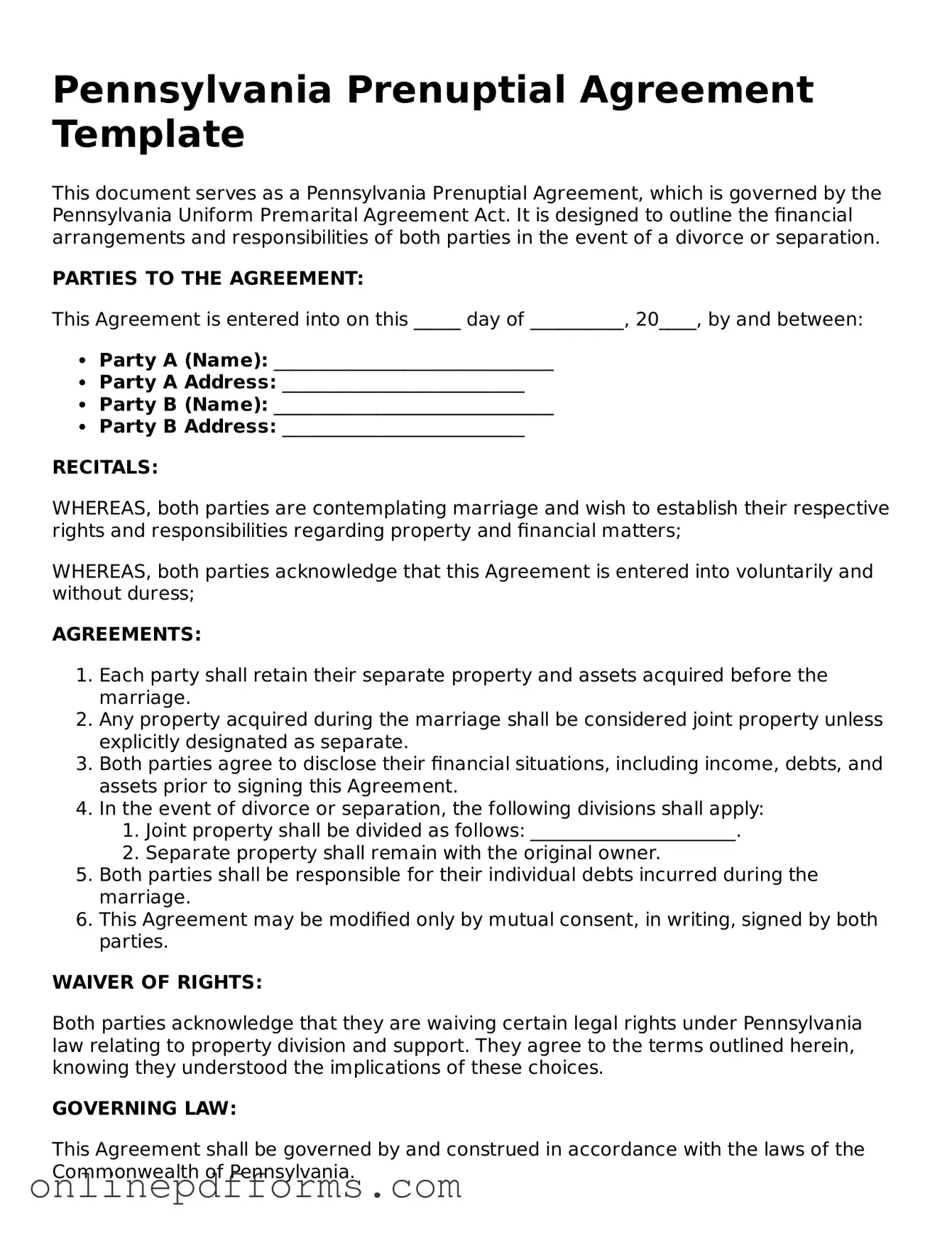A cohabitation agreement is similar to a prenuptial agreement in that it outlines the rights and responsibilities of partners who live together but are not married. This document can cover issues such as property ownership, financial obligations, and how assets will be divided in the event of a separation. Like a prenuptial agreement, a cohabitation agreement is designed to protect both parties and can help prevent disputes in the future.
A postnuptial agreement serves a purpose akin to that of a prenuptial agreement but is created after the marriage has taken place. It allows couples to define their financial arrangements and responsibilities, especially if their circumstances change, such as receiving an inheritance or starting a business. Both documents aim to clarify financial matters and provide a framework for asset division should the marriage end.
An estate planning document, such as a will or trust, shares similarities with a prenuptial agreement in that both are designed to manage assets and protect beneficiaries. While a prenuptial agreement focuses on asset division during a marriage or divorce, an estate plan addresses the distribution of assets upon death. Both documents are essential for ensuring that individuals' wishes are honored and that their loved ones are protected.
A separation agreement is another document that parallels a prenuptial agreement. This legal contract is created when a couple decides to live apart but is not yet divorced. It outlines the terms of the separation, including child custody, support, and property division. Like a prenuptial agreement, it aims to minimize conflict and provide clarity during a challenging time.
A marital settlement agreement is similar to a prenuptial agreement in that it addresses the division of assets and responsibilities during a divorce. This document is created when a couple has decided to end their marriage and outlines how they will divide their property, debts, and any child-related matters. Both agreements serve to protect the interests of both parties and facilitate a smoother transition during significant life changes.
A financial disclosure form can be compared to a prenuptial agreement as it requires both parties to fully disclose their financial situations before entering into an agreement. This transparency is crucial for ensuring that both individuals understand each other's assets, debts, and income. Both documents aim to promote fairness and informed decision-making in financial matters.
A domestic partnership agreement, similar to a prenuptial agreement, is designed for couples who are not married but wish to outline their rights and responsibilities. This document can cover financial arrangements, property rights, and other essential aspects of the partnership. Both agreements serve to clarify expectations and protect the interests of both partners.
For those considering renting, utilizing a comprehensive Rental Application process can streamline the screening of potential tenants. This essential document not only aids landlords in gathering relevant information but also establishes a clear protocol for rental inquiries, helping ensure a suitable match for properties.
An adoption agreement, while focused on the legal relationship between an adoptive parent and child, shares some similarities with a prenuptial agreement in terms of establishing rights and responsibilities. Both documents are intended to create clear legal frameworks that protect the interests of all parties involved. While the contexts differ, the underlying goal of providing clarity and security remains consistent.
